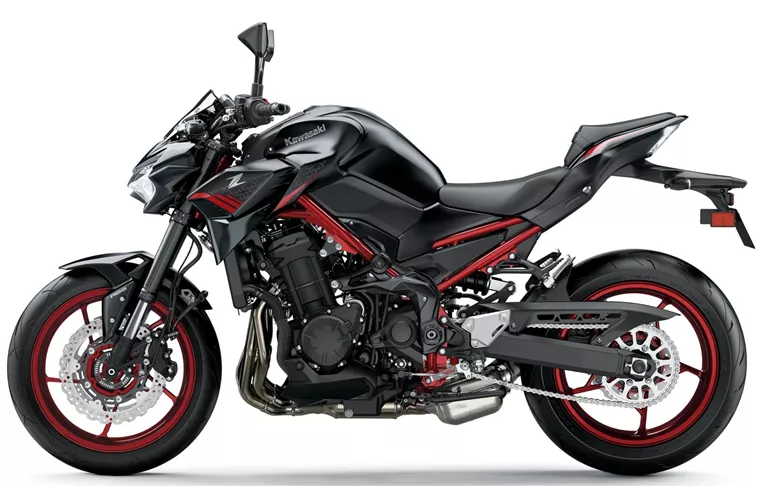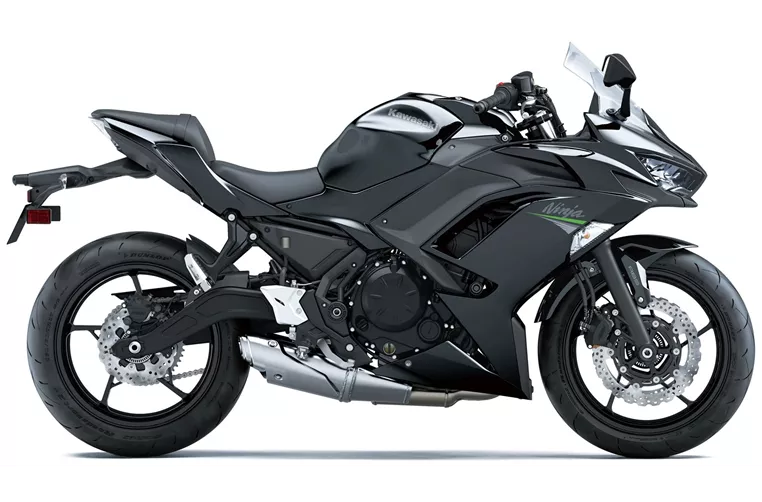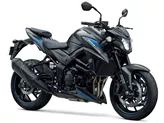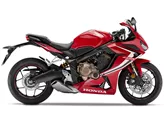Kawasaki Z900 2021 vs. Kawasaki Ninja 650 2020

Kawasaki Z900 2021
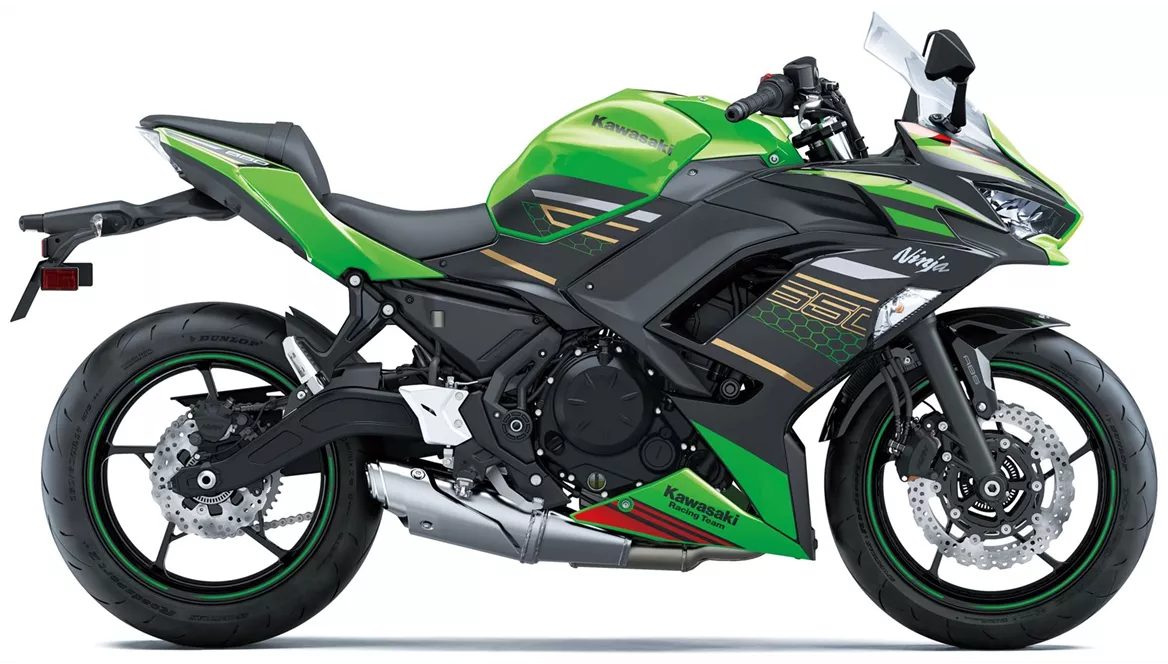
Kawasaki Ninja 650 2020
Visão geral - Kawasaki Z900 2021 vs Kawasaki Ninja 650 2020
The Kawasaki Z900 2021 is equipped with a powerful four-cylinder engine, providing a thrilling riding experience. Its inline engine type and 948cc displacement contribute to its impressive power output of 125.4 HP and torque of 98.6 Nm. The bike also features a liquid cooling system, ensuring optimal engine performance.
In terms of suspension, the Z900 2021 is equipped with a telescopic fork front suspension with a diameter of 41mm, providing stability and control on various road surfaces. The rear suspension consists of a swingarm with a monoshock and deflection support, allowing for pre-load and recovery adjustments.
The chassis of the Z900 2021 is made of steel and features a double cradle frame design. This design enhances the bike's stability and handling, making it easy to maneuver in various riding conditions. The rake angle of 65 degrees and a trail of 105mm further contribute to its agile handling.
The braking system of the Z900 2021 includes dual disc brakes with a diameter of 300mm at the front, providing excellent stopping power. The four-piston calipers and petaled technology enhance the braking performance and ensure efficient heat dissipation.
In terms of advanced rider assistance systems, the Z900 2021 is equipped with ABS, riding modes, ride-by-wire throttle control, and traction control. These features enhance safety and provide a customizable riding experience.
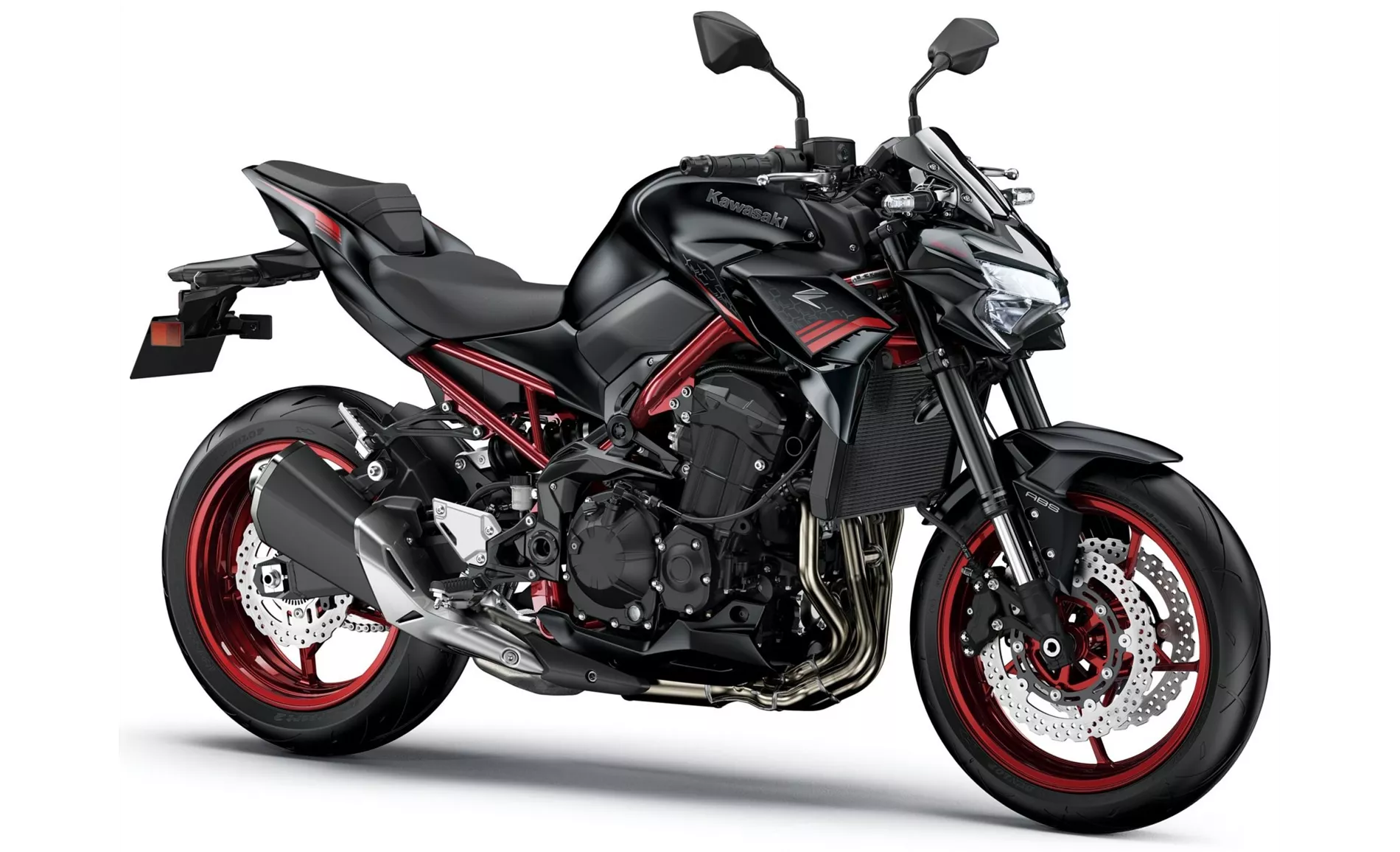
Kawasaki Z900 2021
The Z900 2021 comes with a 120mm wide front tire and a 180mm wide rear tire, both with a diameter of 17 inches. The bike has a wheelbase of 1450mm and a seat height of 795mm, providing a comfortable riding position for most riders. With a curb weight of 210kg (with ABS), the Z900 2021 strikes a balance between stability and agility.
In terms of equipment, the Z900 2021 features LED daytime running lights, LED headlights, and a TFT display, enhancing visibility and providing a modern and stylish look.
On the other hand, the Kawasaki Ninja 650 2020 is a supersport bike that offers a unique riding experience. It is powered by a powerful two-cylinder engine with a displacement of 649cc. The inline engine type and liquid cooling system contribute to its power output of 68.2 HP and torque of 65.7 Nm.
The Ninja 650 2020 features a telescopic fork front suspension with a diameter of 41mm, providing stability and control. The rear suspension consists of a swingarm with a monoshock and pre-load adjustment.
The chassis of the Ninja 650 2020 is made of steel and features a tubular frame design. The rake angle of 65.5 degrees and a trail of 100mm contribute to its stable and responsive handling.
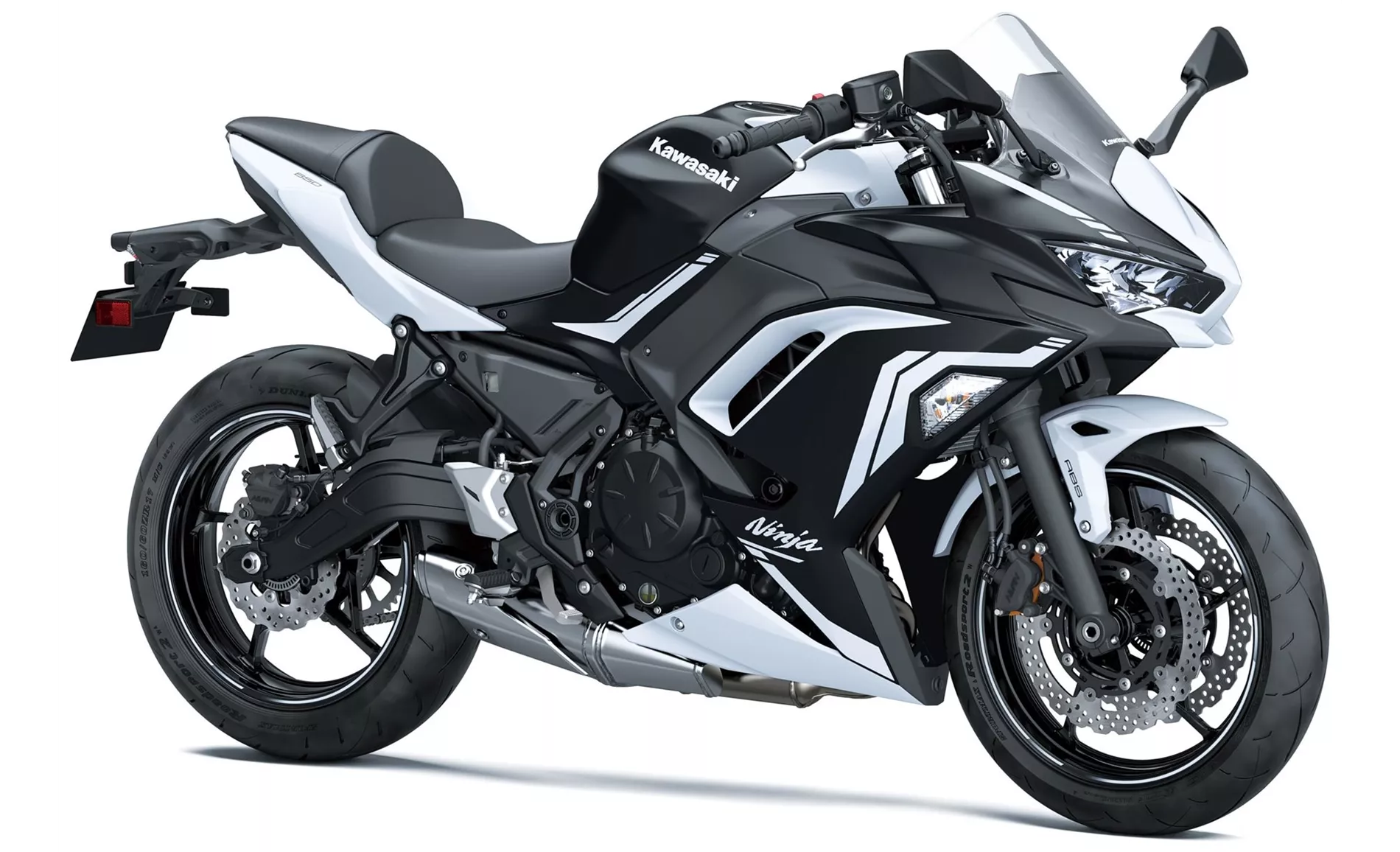
Kawasaki Ninja 650 2020
The braking system of the Ninja 650 2020 includes dual disc brakes with a diameter of 300mm at the front, providing reliable stopping power. The piston calipers and petaled technology ensure efficient heat dissipation.
In terms of rider assistance systems, the Ninja 650 2020 is equipped with ABS, enhancing safety during braking.
The Ninja 650 2020 features a 120mm wide front tire and a 160mm wide rear tire, both with a diameter of 17 inches. The bike has a wheelbase of 1410mm and a seat height of 790mm, providing a comfortable riding position for most riders. With a curb weight of 193kg (with ABS), the Ninja 650 2020 is lightweight and agile.
In terms of equipment, the Ninja 650 2020 features LED daytime running lights, LED headlights, and a TFT display with connectivity options.
In summary, the Kawasaki Z900 2021 and the Kawasaki Ninja 650 2020 are both impressive bikes with their own strengths and weaknesses. The Z900 2021 offers a more powerful four-cylinder engine, intuitive handling, and a good equipment package. On the other hand, the Ninja 650 2020 offers a powerful two-cylinder engine, a comfortable seat suitable for longer rides, and a sporty appearance. Both bikes feature modern equipment and advanced rider assistance systems. However, the Z900 2021 lacks quick-shifter option and some competitors offer more advanced electronic features. The Ninja 650 2020 may not be suitable for taller riders and has limited suitability for two-person trips.
Especificações técnicas Kawasaki Z900 2021 em comparação com Kawasaki Ninja 650 2020
Prós e contras em comparação
Prós e contras em comparação
Kawasaki Z900 2021
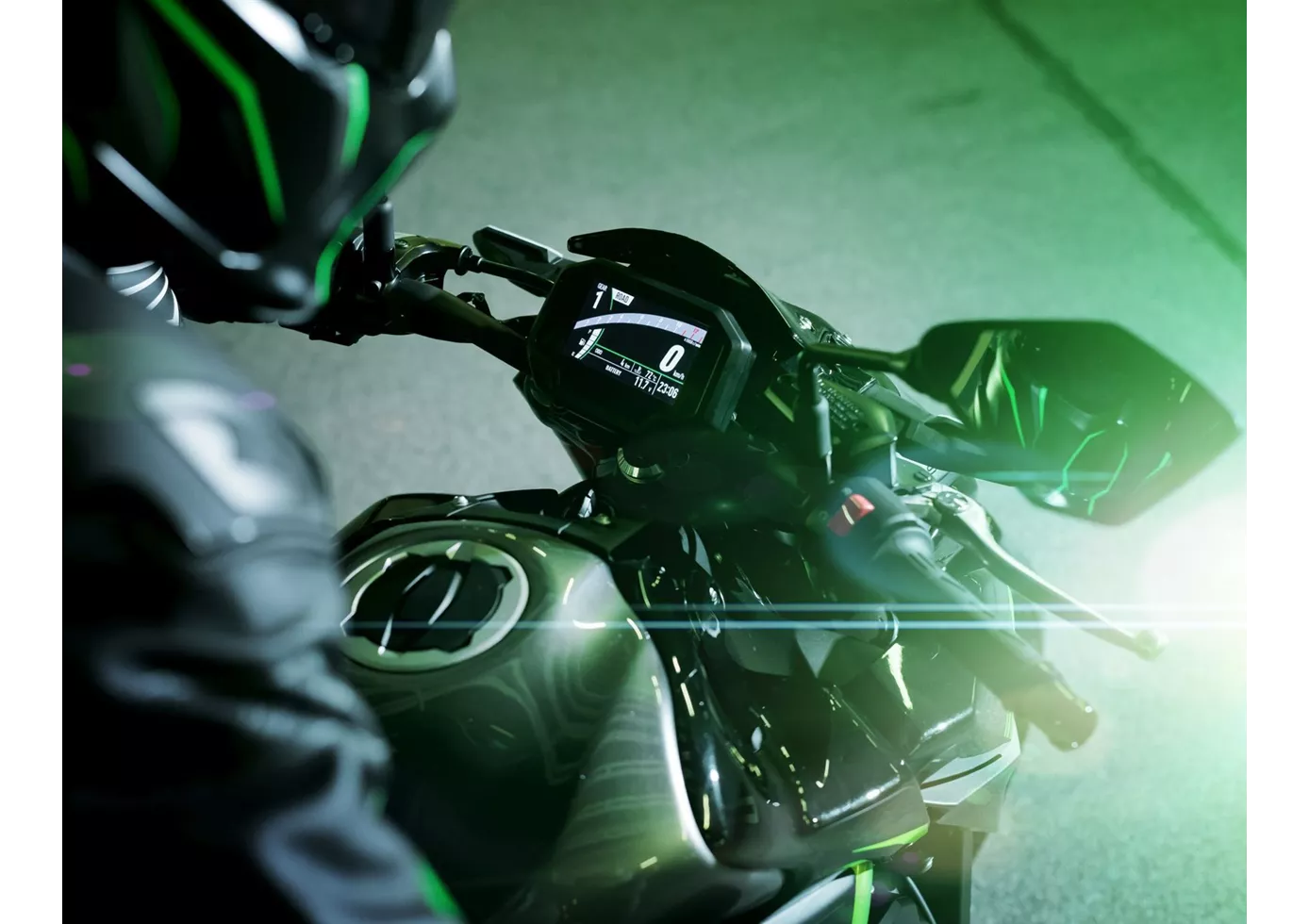
Em termos de preço-desempenho, a Kawasaki Z900 é difícil de bater neste momento. Com o motor perfeitamente afinado, os componentes do quadro de alta qualidade e a eletrónica adicionada para 2020, esta moto naked oferece tudo o que os condutores desportivos procuram. Não há realmente nada a reclamar, exceto a falta de uma opção de mudança de velocidades rápida.
Kawasaki Ninja 650 2020
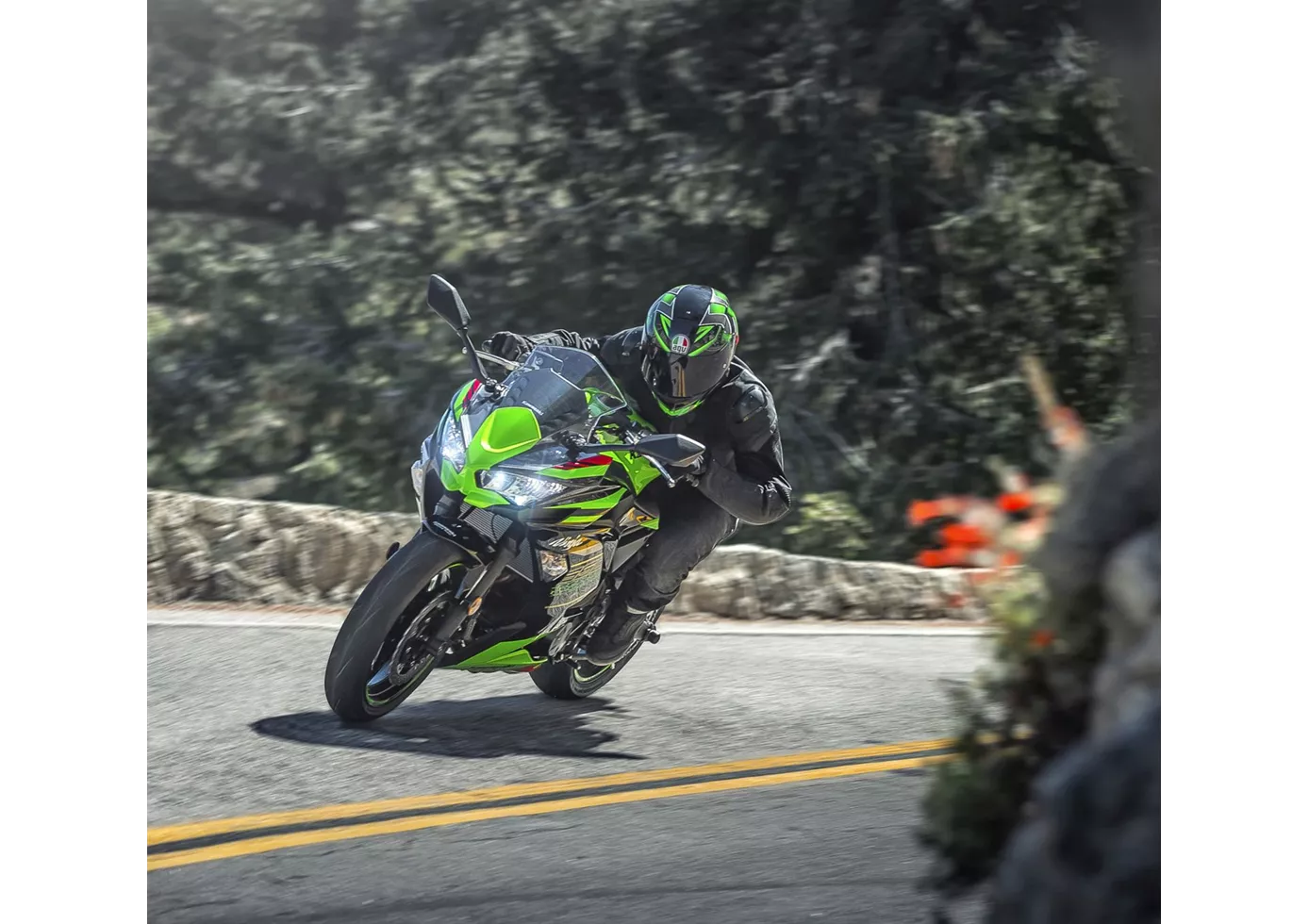
Salve a sport tourer! Com a Ninja 650, a Kawasaki criou uma representante exemplar desta classe e (espera-se) resolveu o problema da nova geração. O chassis estável e os dois cilindros decentes farão as delícias dos principiantes e dos pilotos avançados, mesmo a um ritmo mais acelerado. O travão dianteiro é um pouco bem intencionado demais, faltando-lhe um ponto de pressão transparente, apesar do bom desempenho de travagem. Outra vantagem é o ecrã TFT, que não encontramos na concorrência neste momento, bem como o aspeto adulto, que está fortemente orientado para os modelos Ninja maiores.
Comparação de preços Preço médio de mercado Kawasaki Z900 vs Kawasaki Ninja 650
There are a few key differences between a Kawasaki Z900 2021 and a Kawasaki Ninja 650 2020. In terms of price, the actual average price of a Kawasaki Z900 2021 is about 24% higher. Compared to Kawasaki Ninja 650 2020 there are more Kawasaki Z900 2021 bikes available on the 1000PS.de Marketplace, specifically 33 compared to 10. It takes less time to sell a Kawasaki Ninja 650 with 75 days compared to 107 days for the Kawasaki Z900. Since model year 2017 1000PS.de editors have written 46 reviews for the Kawasaki Z900 and 20 reviews for the Kawasaki Ninja 650 since model year 2017. The first review for the Kawasaki Z900 was published on 11/11/2016 and now has more than 93 200 views. This compares to more than 79 600 views for the first review on Kawasaki Ninja 650 published on 04/10/2016.
